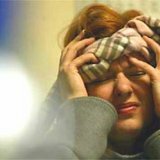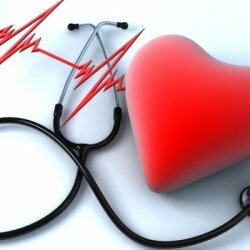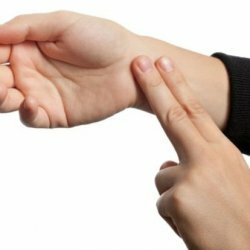Hypertensive crisis: first aid

A significant, sharp rise in blood pressure, which is characterized by certain symptoms - is a hypertensive crisis. To prevent unpleasant consequences, you need to know what a hypertensive crisis is and how to provide first aid.
Symptoms of hypertensive crisis
When the hypertensive crisis occurs, the following symptoms are observed: in the nape of the neck there is a severe headache, a headache of pain without localization;Noise in the head and ears;Appear flies, shroud, fog before the eyes;Dry mouth;Fingers of hands and face swell;There is a state of drowsiness and depression. And also there is vomiting and nausea;The shortness of breath begins;Pain and heaviness in the heart;Tongue and lips grow numb;Hyperemia of the face;There is fear and fear, trembling all over the body. The duration of the hypertensive crisis can be as several hours, and several days.
Hypertensive crisis: first aid
First aid for hypertensive crisis is something that every patient and his relatives should know. First, do not panic, take a few breaths. The patient must get settled in bed or on the chair so that the head is necessarily raised, you need to remove the squeezing clothes from it. Also, you need to open a window or window to supply fresh air. Dampen the towel with cold water and put on the forehead and neck. Try to relax, measure blood pressure. If the pressure is high, then take( if there are no contraindications) a capsule( 25 mg) or corinth( 10 mg), or nifedipine( 10 mg), or clofellin( 0.075 mg) if prescribed by a doctor. If you do not suffer from bronchial asthma, you can take anaprilin( 40 mg).In addition, take 60 drops of valokurdin or corvalolum, or motherwort, valerian. Put a mustard plaster on the back of your head. If in a head sharp and strong pains accept diuretic preparations. With severe pain in the chest, put a nitroglycerin pillet under your tongue.
Do not measure pressure immediately after taking nifedipine or clonidine, so as not to provoke panic. This is because the pressure will be increased in the first 20 minutes, compared to the initial pressure. If after an hour the arterial pressure decreased by 20%, then the result is achieved. Do not try to quickly reduce the pressure! If you do not get the desired result, take furosemide( 40 mg) or hypothiazite( 100 mg), or take the same medication as before or another of the above. Patients with coronary heart disease should preferably take nitrosorbide( 100 mg).In addition to all of the above, it is desirable to make a hot foot bath or use a heating pad.
After repeated taking medications, you also need to measure blood pressure in an hour. To stop the increase in pressure of these actions, in most cases, it is enough. In the event that after a couple of hours, from the beginning of the care does not reduce the pressure, there are new symptoms and the state of health worsens, then you need to call an ambulance. An ambulance doctor will assess the condition of the patient and, if necessary, make an injection that will help to remove the attack. If the case is severe, then hospitalization is necessary. Practice shows that the above measures, mainly, help to stop the crisis before the arrival of an ambulance.
Chegoto can not be done with hypertensive crisis
You should not do non-traditional methods of treatment or traditional medicine in order to lower blood pressure. The hypertensive crisis is fraught with its consequences. Crisis can develop acute disturbance of cerebral circulation and many other complications. Because of this, a patient suffering from this disease is not recommended to cancel preparations prescribed by a doctor. In addition, it is necessary to observe the regime of rest and work, to follow the diet recommended by a specialist. If you know about the hypertensive crisis, you or your relatives can help you.



